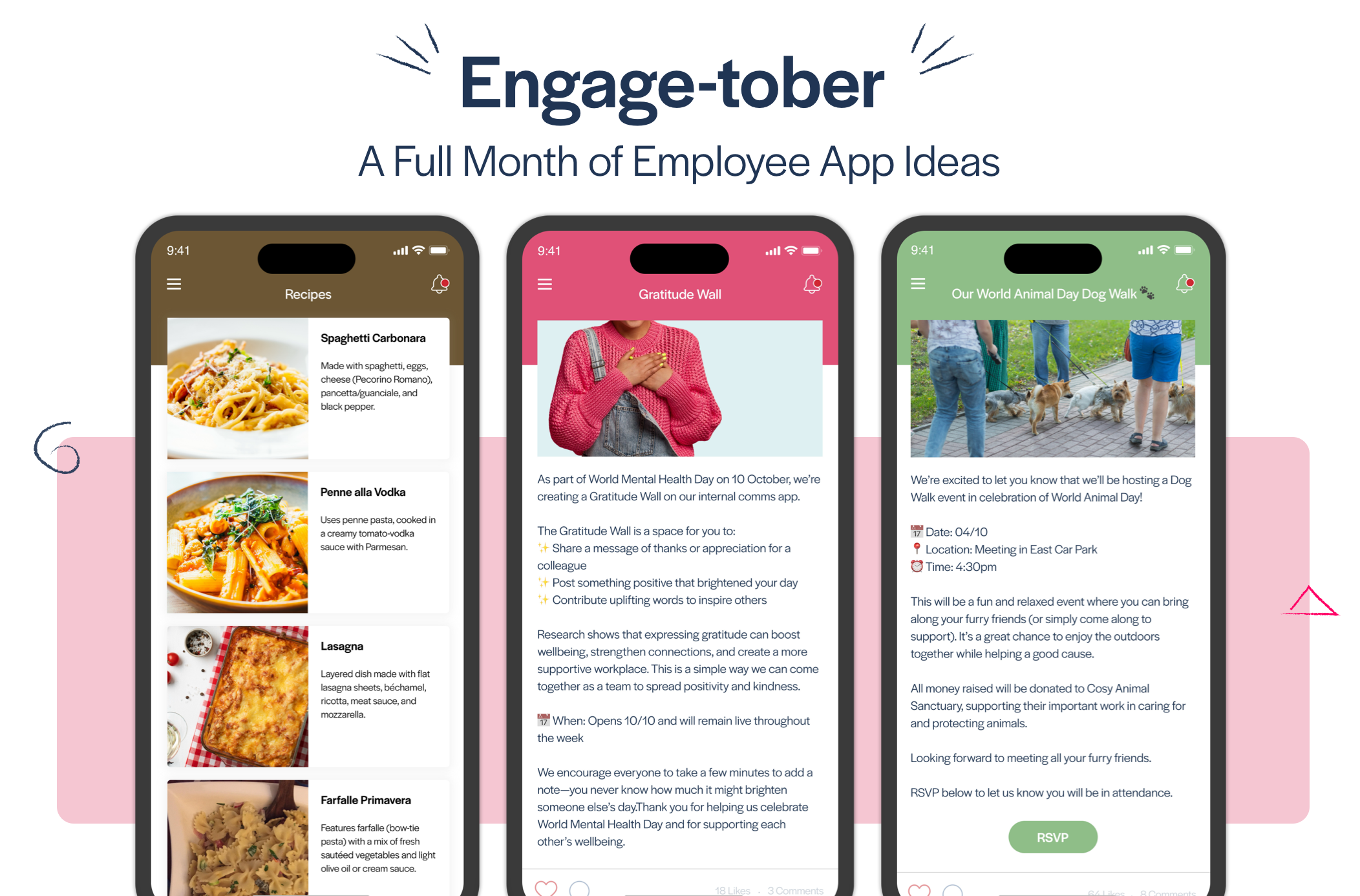
Blog
The Comms Crisis: Why Do Businesses Still Struggle with Communication?
We’re more connected than ever, but does that mean we’re communicating better than ever? Recent data suggests otherwise.

These days, we’re spoiled with an abundance of methods and channels for communicating with employees and colleagues: Around-the-clock email, a multitude of messaging apps lighting up our ever-present smartphones, even open-plan office spaces where once there were closed-off cubicles.
And yet, communication is still a problem for many businesses. Two-thirds of managers (69%) report they are uncomfortable communicating with employees. More than half—57%—of employees say they aren’t given clear directions. Eight out of 10 people believe communication at their workplace is only average or poor; just 17% would rate it as excellent.
Communications Breakdowns
Part of the problem leading to those telling statistics has to do with the way leadership understands and views the role of internal communications. A key finding of a recent study investigating the value and effectiveness of IC was that while many CEOs do recognise the role of communications in broadcasting company strategy, values and priorities, very few acknowledge the need for communication to be a two-way process that gives employees—not just leadership—a voice.
Here are four common culprits we’re seeing in organisations today that have a direct impact on communication.
1. Increase in Remote Workers
Remote work has increased 159% in recent years. And although this trend is in line with the way many workers want to work, it brings some significant challenges. Near the top of the list? Communication is cited as the biggest struggle of working remotely by 17% of remote workers, and 8% say it’s being a different time zone than their team.
How to fix it:
Because 99% of those who responded to one survey indicate they want to continue to work remote for the rest of their lives, banning remote work likely isn’t the right solution.
Instead, develop systems or processes with a goal of using communication to get closer to remote employees. One option: Daily virtual stand-ups take just 10 minutes, and everyone gets to provide progress notes or bring up pain points.
2. Too Much Reliance on Communications “Institutions”
Email is a widely used communications tool, with 39% of workers saying they use it as their primary form of communication with coworkers. But it’s not the most efficient tool: The average professional spends 28% of the workday reading and answering email. And that percentage doesn’t include time spent organising or clearing out inboxes.
Likewise for meetings, which 67% of executives agree are a waste of time, and studies show that many attendees aren’t engaged in the meeting.
How to fix it:
Email and meetings aren’t going anywhere anytime soon, and each certainly has its place. But these days tools have evolved to offer teams far more productive, nimble ways of communicating.
Communications apps that promote back-and-forth dialogue in real time increase the speed at which decisions can be made and work can get done.
3. Solutions Overload
Oftentimes employees feel crushed and unproductive due to the sheer number of communications tools they are required to adopt and use daily to stay updated. What’s more, each tool requires a different login. It all makes for a very fragmented communications experience.
Internal communications teams post updates via the intranet; one team’s direct manager prefers a particular chat app; they collaborate with a different team on an entirely different project management platform; the list could go on. This approach leads to silos, duplication of efforts, and mismanaged information.
How to fix it:
Yes, the engineering team is going to require a different discipline-specific system than accounting will to manage its projects and workflows. However, streamlining at the company level is key.
Look for ways to allow employees to be directly involved in the process of identifying, selecting and managing communications solutions. Create a multi-departmental task force of employees in different roles—from executives to management to front-line employees—to survey and select tools that would be best for company-wide communication.
4. Too Much Fluff
Sometimes organisations push communication out to employees—something, anything—in the name of engagement, things that might interest some employees momentarily, but if communication doesn’t connect to the employees, help them in their role as well as the overarching business vision, objectives and strategy, then it’s just noise.
How to fix it:
Make sure your communications strategy and tactics are in fact what employees are interested in as well as being in direct alignment and in support of your organisational goals, and that they create value.
Whether it’s increasing sales, improving safety, offering best-in-class service, or something else, be relentless in choosing communications tools that will allow all team members to receive consistent messages, connect with each other, and create a digital space where every single employee can rally around a company’s goals and pitch in with content and feedback.
Next Steps
Need help solving a communications crisis in your organisation? At Thrive, we specialise in internal communications apps that allow you to not just reach every employee with valuable content, but that offer opportunities to let every employee have a voice.
You may also be interested in the eBook below... Covid-19: Crisis Communication and Support for Key Workers.










